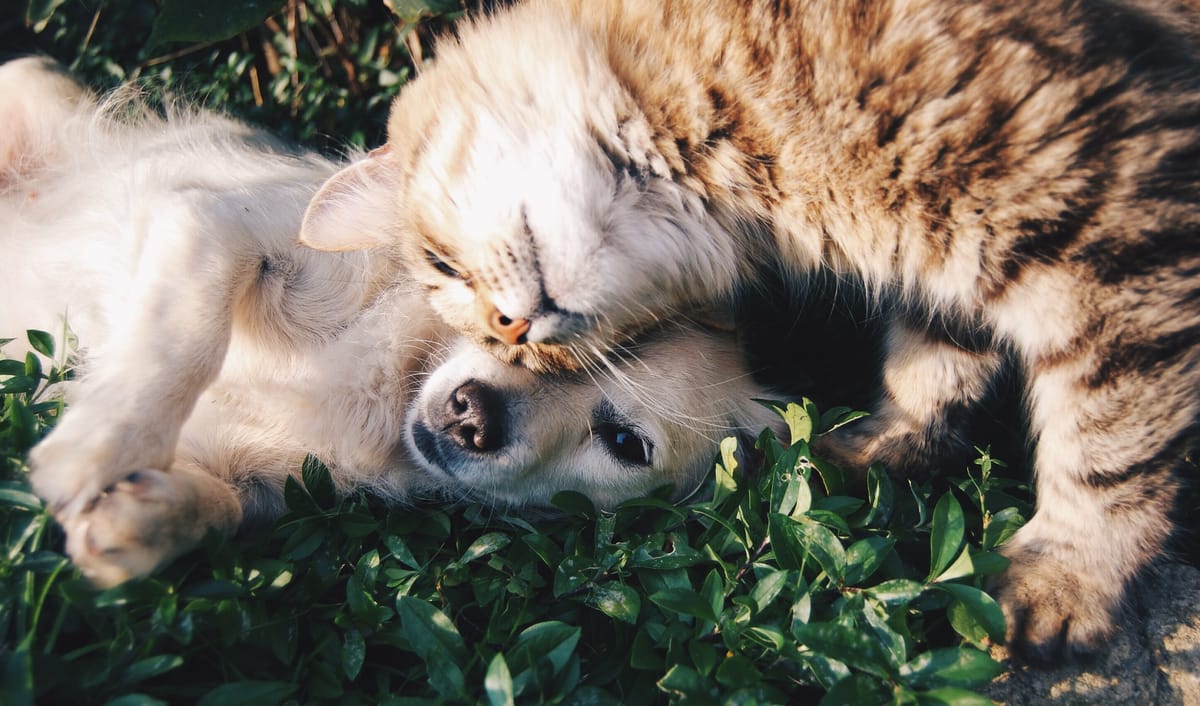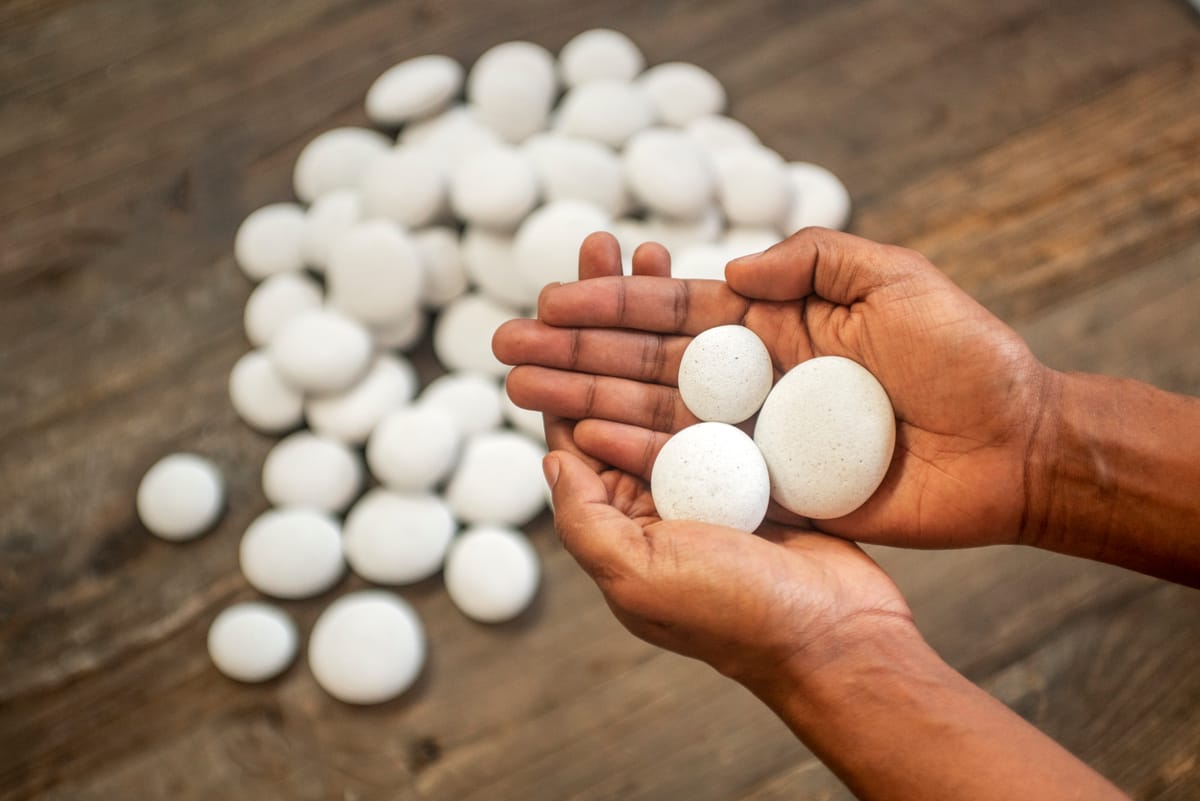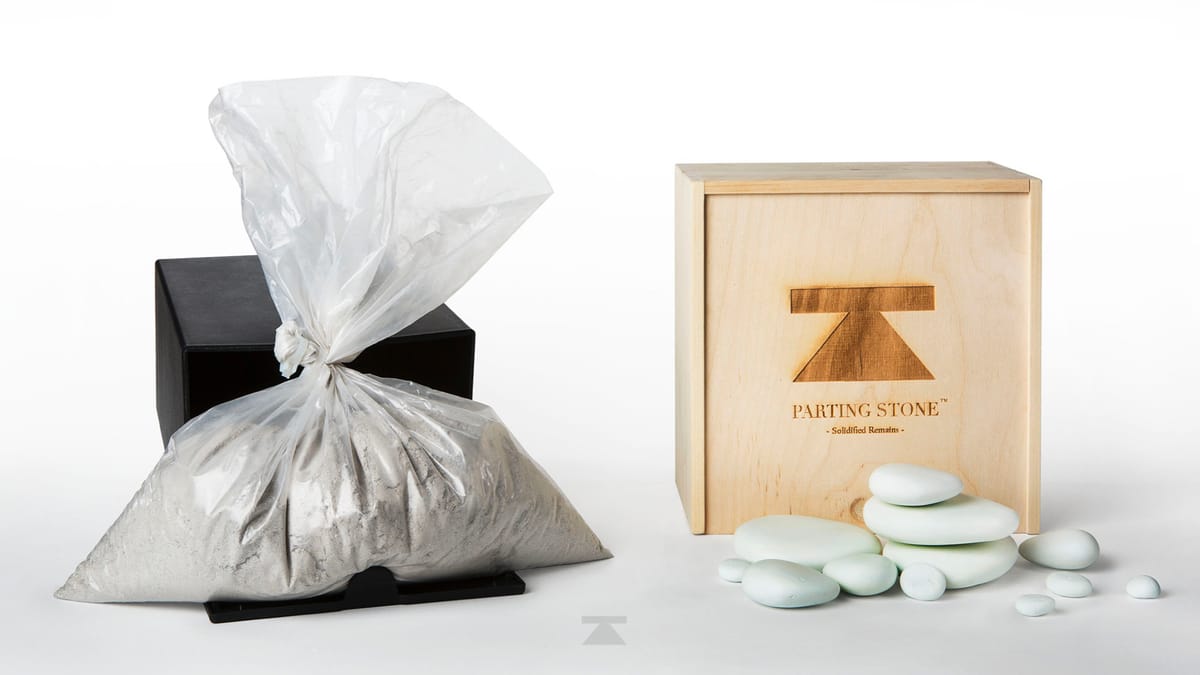Complete Pet Cremation Guide: Honoring Your Beloved Companion
Honor your beloved companion with care. This guide walks you through pet cremation, memorial options, and meaningful ways to keep their memory close.

When you lose a beloved pet, the grief can feel overwhelming. We understand that making decisions about your pet's final arrangements during this emotional time is incredibly difficult. This comprehensive pet cremation guide provides the information, support, and clarity you need to make choices that honor your cherished companion's memory.
Reflections on love, loss, and the ways we carry them.
Grief after the loss of a beloved pet can feel like an ache that refuses to fade. It’s what I often tell my clients: grief is love with nowhere to go. Your pain reflects the depth of your connection, and in time, that love finds new ways to express itself.
Pet loss grief is as real and valid as any other kind of bereavement. Many of those I’ve counseled describe the same emotions: the quiet guilt of having a good day, the loneliness of walking into an empty room, or the strange relief after a long illness. Healing begins with allowing yourself to feel it all without apology.
In my practice, I once worked with a woman who had lost her senior cat, Luna, after sixteen years together. She kept Luna’s blanket folded neatly by her bedside, unable to put it away. Instead of urging her to “move on,” we created a ritual: lighting a candle each evening and whispering, “Thank you for the love you gave.” Over time, that ritual became less about pain and more about gratitude.
Healthy coping involves gentle consistency—maintaining routines, connecting with understanding friends, or joining a pet loss support group. Rituals help, too: planting a tree, framing a photo, or preserving a portion of ashes through memorial options like solidified remains from Parting Stone. These tangible acts turn sorrow into remembrance, love into legacy.
There is no fixed timeline for mourning. For some, the ache softens in months; for others, it lingers for years. What matters is that you move at the rhythm of your heart. Healing is not forgetting. It’s learning to carry the love in a new way.
Cathy Sanchez Babao
Parting Stone Grief Coach
Understanding Your Options: A Compassionate Overview
Losing a pet means saying goodbye to a family member. It's natural to feel confused, overwhelmed, or uncertain about what comes next. Many pet parents experience a mix of emotions—grief, guilt, confusion, and even relief if their pet was suffering. These feelings are all valid and normal.
The First 24 Hours: What to Expect
The immediate aftermath of pet loss can feel surreal. You might experience:
- Shock and disbelief: "This can't be real"
- Physical symptoms: Chest tightness, difficulty breathing, exhaustion
- Decision paralysis: Feeling unable to make choices
- Urgent need for action: Wanting to "do something"
- Complete emptiness: Emotional numbness
"The first night without hearing his collar jingle was the hardest. I kept thinking I heard him at the door. The silence was deafening." - Reddit user, r/petloss
During this time, it's important to:
- Allow yourself to feel whatever comes up
- Reach out to supportive friends or family
- Take care of basic needs (eat, drink water, rest)
- Make only essential decisions
- Give yourself permission to grieve
Why Consider Pet Cremation?
Pet cremation has become the most common choice for pet aftercare, with over 90% of pet parents choosing this option. The reasons are both practical and emotional:
- Memorialization flexibility: Keep your pet's remains close or scatter them in a meaningful location
- Space considerations: Ideal for those without suitable burial space
- Environmental factors: Avoids concerns about groundwater or local burial regulations
- Closure and comfort: Provides a tangible way to maintain connection
- Portability: Take your pet's memory with you if you move
- Weather independence: Not affected by ground conditions or seasons
- Immediate availability: No waiting for ground to thaw or weather to clear
Cultural and Religious Considerations
Different faiths and cultures view pet cremation differently:
- Buddhism and Hinduism: Generally accepting of cremation as it releases the spirit
- Christianity: Varies by denomination; increasingly accepted for pets
- Judaism: Traditional views prefer burial, but pet cremation is often permitted
- Islam: Generally prefers burial, but cultural practices vary
- Indigenous traditions: Varies widely; some embrace cremation, others prefer earth burial
- Secular perspectives: Focus on personal meaning and environmental considerations
Always consult with your spiritual advisor if you have religious concerns about pet cremation.

Types of Pet Cremation: Making the Right Choice
Understanding the different cremation options helps ensure you make a decision aligned with your wishes and values. Each type offers different benefits and considerations.
Cremation Options Comparison
| Cremation Type | Individual Process | Ashes Returned | Price Range | Best For |
|---|---|---|---|---|
| Private | Yes - pet alone | All ashes returned | $150-$400 | Those wanting complete assurance and individual handling |
| Semi-Private | Partial - with dividers | Most ashes returned | $100-$250 | Families wanting individual remains at moderate cost |
| Communal | No - multiple pets | No ashes returned | $30-$150 | Those seeking affordable, dignified disposition |
| Witness | Yes - family present | All ashes returned | $200-$500 | Families wanting closure through presence |
Private Cremation
Private cremation means your pet is cremated individually, ensuring you receive only your pet's ashes. This option provides:
- Guaranteed individual process: Your pet alone in the cremation chamber
- Complete return of remains: Typically 3-8% of your pet's body weight
- Personalized service: Often includes viewing options and special handling
- Price range: Generally $150-$400 depending on pet size and location
Many families choose private cremation because it offers peace of mind and the ability to create meaningful memorials.
Semi-Private (Partitioned) Cremation
This option involves multiple pets cremated simultaneously but separated by partitions:
- Partial separation: Reduces but doesn't eliminate commingling
- Most ashes returned: You receive primarily your pet's remains
- Mid-range pricing: Typically 30-50% less than private cremation
- Suitable for: Families wanting individual remains at lower cost
Communal Cremation
In communal cremation, multiple pets are cremated together without separation:
- No ashes returned: Remains are typically scattered by the facility
- Most affordable option: Usually $30-$150
- Environmentally conscious: Efficient use of resources
- Peaceful closure: Knowing your pet isn't alone
Choosing a Pet Cremation Provider: Essential Guidelines
Selecting the right cremation provider ensures your pet is treated with dignity and respect. Not all facilities maintain the same standards, making research crucial.
Red Flags to Avoid
Be cautious of providers who:
- Refuse facility tours: Transparency is crucial
- Can't explain their identification system: Proper tracking is non-negotiable
- Offer prices significantly below market: May indicate corner-cutting
- Lack proper licensing: Check state and local requirements
- Won't provide references: Established providers have satisfied clients
- Rush you to decide: Grief shouldn't be exploited
- Have no physical location: Verify legitimacy
"The first place we called pressured us to decide immediately and wouldn't let us visit. Major red flag. We found another provider who gave us a tour and answered every question patiently." - Tom and Linda S., pet parents
Signs of Quality Providers
Look for these positive indicators:
Professional Standards:
- IAOPCC (International Association of Pet Cemeteries & Crematories) membership
- State licensing and permits displayed
- Clear written policies and procedures
- Detailed price lists without hidden fees
Facility Features:
- Clean, well-maintained premises
- Modern cremation equipment
- Comfortable family rooms
- Viewing areas if desired
Staff Qualities:
- Compassionate, patient demeanor
- Willing to answer all questions
- Professional grief training
- Available references
Due Diligence Checklist
Before choosing a provider:
- Read online reviews across multiple platforms
- Ask your veterinarian for recommendations
- Visit the facility if possible
- Request written agreements before committing
- Verify insurance and bonding
- Confirm pickup and delivery procedures
- Understand their guarantee policy

The Pet Cremation Process: What Actually Happens
Transparency about the cremation process helps alleviate anxiety and allows you to make informed decisions. Here's what typically occurs:
Pre-Cremation Considerations
Before the process begins, several important decisions and preparations occur:
Timing Decisions:
- Immediate cremation (within 24-48 hours)
- Delayed cremation (allowing time for family gathering)
- Scheduled cremation (choosing specific date/time)
Special Requests:
- Fur clippings or paw prints
- Clay impressions
- Ink prints
- Photo opportunities
- Final grooming
Items to Include: Many families choose to include:
- Favorite small toy
- Letter or note
- Photo
- Small blanket
- Flowers
- Treats (removed before cremation)
Note: Metal items, large toys, and synthetic materials are typically removed and returned separately.
Step 1: Transportation and Intake
After your pet passes, whether at home or at a veterinary clinic:
- Gentle handling: Your pet is carefully placed in a dignified container
- Identification: A unique tracking system ensures proper identification
- Documentation: All necessary paperwork is completed
- Cold storage: If cremation isn't immediate, respectful preservation
Step 2: Preparation
Before cremation begins:
- Final verification: Identity confirmation through multiple checkpoints
- Removal of items: Collars, tags, or medical devices (returned if requested)
- Positioning: Your pet is placed respectfully in the cremation chamber
- Optional viewing: Some facilities offer family witnessing
Step 3: The Cremation
The actual cremation process:
- Temperature: Chamber reaches 1400-1800°F
- Duration: 30 minutes to 2 hours depending on size
- Complete process: All organic matter is reduced to bone fragments
- Environmental controls: Modern facilities use advanced filtration
Step 4: Processing and Return
After cremation:
- Cooling period: Remains cool for safe handling
- Processing: Bone fragments are refined to uniform ash consistency
- Final weight: Typically 3-8% of living body weight
- Packaging: Placed in chosen urn or temporary container
- Return timing: Usually 3-7 days from pickup
"When they called to say her ashes were ready, I wasn't prepared for the wave of emotion. It felt so final. But holding that small urn also brought unexpected comfort—she was home again." - Ashley P., cat parent
Understanding Pet Ashes
Many pet parents wonder about the ashes they receive:
What to Expect: Cremated Remains by Pet Size⁶
| Pet Size | Typical Weight | Expected Ash Volume | Ash Weight | Container Needed |
|---|---|---|---|---|
| Hamster/Bird | <1 lb | 1-2 tbsp | <1 oz | Keepsake size |
| Cat/Small Dog | 5-25 lbs | 1/2 - 2 cups | 2-4 oz | Small urn (30-45 cu in) |
| Medium Dog | 25-60 lbs | 2-4 cups | 4-8 oz | Medium urn (45-90 cu in) |
| Large Dog | 60-100 lbs | 4-7 cups | 8-14 oz | Large urn (90-150 cu in) |
| Giant Breed | 100+ lbs | 7-10+ cups | 14-20+ oz | XL urn (150+ cu in) |
Physical Characteristics:
- Color: Generally pale gray to white
- Texture: Fine, sand-like consistency
- Volume: One pound of body weight ≈ one cubic inch of ashes
- Weight: Surprisingly light compared to expectations
What's Actually in the Ashes:
- Primarily calcium phosphates and carbonates
- Trace minerals from the body
- No organic material remains
- Completely sterile and safe to handle
Storage Considerations:
- Keep in dry location
- Sealed containers prevent moisture absorption
- No special temperature requirements
- Indefinite shelf life
- Safe around children and other pets

Making Informed Decisions: Key Considerations
Questions to Ask Your Provider
Don't hesitate to ask detailed questions. Reputable providers welcome transparency:
About their process:
- How do you ensure my pet's individual identification?
- Can I witness or be present for the cremation?
- What type of cremation equipment do you use?
- How long have you been providing pet cremation services?
About handling and care:
- How is my pet transported and stored?
- What happens to medical devices or implants?
- Can I include special items with my pet?
- Do you offer paw print keepsakes or fur clippings?
About timing and logistics:
- What is your typical turnaround time?
- Do you offer pickup services?
- What documentation will I receive?
- Are you licensed and certified?
Understanding Pricing
Pet cremation costs vary based on several factors:
Pet Cremation Pricing by Size
| Pet Weight | Private Cremation | Semi-Private | Communal | Typical Urn Cost |
|---|---|---|---|---|
| Under 30 lbs | $75-$250 | $50-$150 | $30-$70 | $50-$150 |
| 30-60 lbs | $150-$350 | $100-$225 | $50-$100 | $75-$200 |
| 60-90 lbs | $200-$450 | $150-$300 | $75-$125 | $100-$250 |
| Over 90 lbs | $250-$600 | $200-$400 | $100-$150 | $125-$300 |
"I was shocked when my vet quoted $450 for private cremation of my 80-pound Lab. I called around and found prices ranging from $275 to $500. It really pays to compare." - Sarah M., pet parent
Additional Services Pricing
| Service | Typical Cost | What's Included |
|---|---|---|
| Rush/Same-day | $50-$150 | 24-48 hour return |
| Transportation | $50-$150 | Home/vet pickup |
| Paw prints | $20-$50 | Clay impression |
| Fur clipping | $15-$30 | Memorial keepsake |
| Witness cremation | $50-$150 | Family presence |
| Special urn | $50-$500+ | Decorative container |
| Certificate | Often included | Documentation |
Hidden Costs to Watch For
Be aware of potential additional charges:
Common Add-ons:
- Processing fees (should be included)
- Temporary container fees
- Certificate charges
- Handling fees for oversized pets
- Storage fees if pickup is delayed
- Credit card processing fees
Geographic Price Variations:
- Urban areas: Generally 20-40% higher
- Rural locations: May have limited options
- Coastal regions: Often premium pricing
- Midwest: Typically most affordable
Seasonal Considerations:
- Winter months may have surcharges
- Holiday periods often have expedited fees
- Summer may have higher demand pricing
Payment Options and Planning
Payment Methods:
- Most accept credit/debit cards
- Some offer payment plans
- Pet insurance may cover portion
- CareCredit often accepted
- Pre-need plans available
Cost-Saving Strategies:
- Group discounts for multiple pets
- Pre-planning locks in current prices
- Basic services during regular hours
- Simple container options
- Package deals vs. à la carte
Alternative Aftercare Options
While cremation is common, other options deserve consideration:
Aftercare Options Comparison
| Method | Process | Time Frame | Cost Range | Environmental Impact | Remains Returned |
|---|---|---|---|---|---|
| Traditional Cremation | High-heat flame | 1-2 hours | $50-$600 | Moderate emissions | Yes - ashes |
| Aquamation | Water-based dissolution | 6-8 hours | $150-$400 | 90% less energy¹ | Yes - 20% more remains |
| Solidification | Cremains to stones | 2 weeks | $1,150 | Minimal | Yes - 5-100+ stones |
| Natural Burial | Earth decomposition | Months/years | $200-$1000 | Carbon neutral | No |
| Composting | Biological breakdown | 45-60 days | $200-$400 | Enriches soil | No - becomes soil |
"We chose Parting Stone solidification for our cat, and receiving 40 small stones meant each family member could keep some. Our kids loved being able to hold something tangible." - Jennifer R., California
Solidification (Parting Stone) An innovative process that transforms cremated remains into solidified stones:
- Creates 5-100+ smooth stones from ashes
- Provides a tangible, shareable memorial
- Environmentally friendly process
- Allows for multiple memorial locations
- Stones can be held, carried, or displayed
- Price: $1,150 excluding cremation
- Color variations reflect your pet's uniqueness
- No maintenance required
Aquamation (Water Cremation) An eco-friendly alternative using water instead of flame:
- Gentler process using alkaline hydrolysis
- 90% less energy than traditional cremation
- No emissions produced
- Returns 20% more remains
- Process takes 6-8 hours vs. 1-2 for flame
- Growing availability across the US
- Price comparable to private cremation
- Produces lighter-colored, finer ashes
Natural Burial For those preferring earth return:
- Home burial (check local regulations)
- Pet cemeteries
- Natural burial grounds
- Memorial forests
- Green burial options (no embalming)
- Biodegradable caskets/shrouds
- Living memorials (tree planting)
- GPS marking for natural sites
Taxidermy and Preservation Though less common, some choose:
- Traditional taxidermy
- Freeze-drying preservation
- Skeletal articulation
- Preserved paw prints
- DNA preservation services
Composting (Emerging Option) New environmentally-focused choice:
- Returns nutrients to earth
- Creates usable soil
- Currently limited availability
- Takes 45-60 days
- Regulated state by state

Creating Meaningful Memorials
Honoring your pet's memory helps process grief and celebrate the joy they brought to your life.
Traditional Memorial Options
Urns and Keepsakes:
- Decorative urns matching your home décor
- Biodegradable urns for eventual scattering
- Jewelry containing small amounts of ashes
- Photo memorial boxes
Memorial Services:
- Private family gatherings
- Celebration of life ceremonies
- Online memorial pages
- Charitable donations in pet's name
Creative Memorialization Ideas
Living Memorials:
- Plant a tree with or near the ashes
- Create a memorial garden
- Commission custom artwork
- Write a tribute or story
- Establish a scholarship in their name
- Create a memory bench in a favorite park
- Design a stepping stone for your garden
- Plant their favorite flowers annually
"We planted a dogwood tree with some of Max's ashes. Now every spring when it blooms, we remember how he loved rolling in the fallen petals. It's become our family's way of celebrating his life." - The Johnson Family
Artistic Tributes:
- Glass art incorporating ashes
- Memorial diamonds from carbon
- Custom-painted portraits
- 3D printed sculptures from photos
- Memorial tattoos (some use tiny amounts of ash in ink)
- Handcrafted pottery with ash glaze
- Custom stuffed animals matching your pet
- Memory quilts from favorite blankets
Digital Memorials:
- Virtual memorial websites
- Social media tribute pages
- Digital photo frames with a slideshow
- QR code grave markers linking to an online memorial
- Commissioned digital art
- Memorial videos with favorite clips
- Spotify playlists of calming music
- Virtual reality experiences
Charitable Memorials:
- Sponsor shelter animals
- Fund spay/neuter programs
- Support pet food banks
- Donate to veterinary schools
- Create a memorial fund for pet medical care
- Sponsor service dog training
- Support wildlife rehabilitation
- Fund pet therapy programs
Shared Remembrance:
- Create photo books or videos
- Share favorite memories with family
- Donate to animal charities
- Volunteer at shelters in their honor
- Host a celebration of life gathering
- Create a memory jar for family stories
- Annual remembrance rituals
- Memorial walks in favorite places
Coping with Pet Loss: Emotional Support
Grief is love with nowhere to go. Your pain reflects the depth of your bond, and healing takes time.
Understanding Pet Loss Grief
Pet loss grief is real and valid. You may experience:
- Intense sadness: Waves of emotion are normal
- Guilt: "What if" thoughts are common
- Anger: At the situation, yourself, or others
- Loneliness: Missing daily routines and companionship
- Relief: Especially after prolonged illness
Healthy Coping Strategies
Allow yourself to grieve:
- There's no timeline for healing
- Express emotions without judgment
- Create rituals that bring comfort
- Maintain routines when possible
Seek support when needed:
- Pet loss support groups
- Grief counselors specializing in pet loss
- Online communities and forums
- Understanding friends and family
When to Seek Professional Help
Consider counseling if experiencing:
- Prolonged inability to function
- Persistent guilt or self-blame
- Inability to accept the loss
- Interference with work or relationships
- Thoughts of self-harm
- Inability to care for other pets
- Substance abuse as coping mechanism
- Complete social isolation
The Grief Timeline: What to Expect
Understanding the typical grief journey helps normalize your experience:
Grief Progression Timeline
| Time Period | Common Experiences | Physical Symptoms | Coping Strategies |
|---|---|---|---|
| First Week | Shock, disbelief, searching behaviors | Loss of appetite, insomnia, fatigue | Rest, hydration, minimal decisions |
| First Month | Reality setting in, intense waves | Headaches, chest pain, weakness | Routine maintenance, gentle exercise |
| 2-6 Months | Good and bad days, trigger identification | Improving but variable | Memorial planning, support groups |
| 6-12 Months | Softening grief, anniversary reactions | More energy, better sleep | New routines, considering memories |
| Beyond 1 Year | Integrated grief, mostly peaceful | Normalized, occasional waves | Living with love, honoring memory |
"At 3 months I felt guilty for having a good day. My therapist reminded me that healing isn't betraying my dog's memory—it's honoring the joy he brought me."³ - Anonymous, grief support group
Remember: There's no "correct" timeline. Some grieve for weeks, others for years. Both are normal.
Complicated Grief Factors
Some situations make grief particularly challenging:
Traumatic Loss:
- Sudden accident or illness
- Young pet's death
- Witnessing suffering
- Multiple pet losses
- Death during procedure
Complicating Circumstances:
- Limited support system
- Concurrent life stresses
- First pet loss experience
- Childhood pet dying
- Financial guilt about treatment
Disenfranchised Grief:
- Others minimizing loss ("just a pet")
- Workplace lack of understanding
- Cultural differences in pet value
- Hidden grief due to judgment
- Comparison to human loss
Building a Support System
Creating networks for healing:
Immediate Circle:
- Understanding family members
- Pet-loving friends
- Veterinary staff who knew pet
- Pet sitter/walker who cared
- Online communities
Professional Support:
- Pet loss counselors
- Grief support groups
- Veterinary social workers
- Therapists specializing in loss
- Spiritual advisors
Community Resources:
- Local pet loss hotlines
- Library grief resources
- Community center programs
- Religious congregation support
- Animal shelter volunteer opportunities
Special Circumstances and Considerations
Legal Rights and Regulations
Understanding your legal rights helps protect you during a vulnerable time:
State Regulation Overview⁵
| Regulation Type | States with Laws | Key Requirements | Consumer Protections |
|---|---|---|---|
| Licensing Required | 42 states | Annual renewal, inspections | Right to verify license |
| Tracking Mandatory | 38 states | Metal tags, documentation | Chain of custody proof |
| Disclosure Rules | 45 states | Written price lists | No hidden fees |
| Facility Standards | 35 states | Equipment maintenance | Right to tour facility |
| Complaint Process | All states | State agency oversight | Formal grievance system |
"I didn't know I had the right to witness the cremation until I read my state's regulations. Being there brought incredible closure." - Reddit user, r/Petloss
Your Rights as a Pet Parent:
- Right to individual cremation if paid for
- Right to witness the cremation (many facilities)
- Right to receive only your pet's ashes
- Right to detailed documentation
- Right to refuse additional services
- Right to price transparency
- Right to file complaints with state agencies
State and Local Regulations:
- Crematory licensing requirements vary by state
- Some states require veterinary involvement
- Local zoning may affect home burial
- Transportation across state lines may have restrictions
- Environmental regulations affect scattering locations
- Consumer protection laws apply to pet cremation
Documentation You Should Receive:
- Detailed receipt with services itemized
- Certificate of cremation
- Chain of custody documentation
- Crematory license number
- Contact information for complaints
Scattering Laws and Etiquette:
- Private property: Owner permission required
- Public lands: Check with managing agency
- Waterways: EPA regulations may apply
- National parks: Generally prohibited
- State parks: Varies by location
- Ocean scattering: Must be 3+ miles from shore
Euthanasia and Cremation
If choosing euthanasia:
- Discuss aftercare before the appointment
- Many vets partner with cremation services
- Some offer in-home euthanasia with cremation arrangement
- Take time to say goodbye
Multiple Pet Households
When other pets are grieving:
- Allow surviving pets to smell/see the deceased if possible
- Maintain routines
- Watch for behavior changes
- Consider their needs in memorial planning
Children and Pet Loss
Helping children understand:
- Use age-appropriate language
- Involve them in memorial decisions
- Encourage expression through art or writing
- Model healthy grieving
Taking Action: Your Next Steps
Immediate Decisions
If your pet has just passed:
- Take a moment to breathe and say goodbye
- Contact your chosen cremation provider
- Arrange transportation if needed
- Gather any special items you want included
Planning Ahead
For aging or ill pets:
- Research providers in advance
- Discuss preferences with family
- Consider pre-planning arrangements
- Document your wishes
After Receiving Remains
When your pet's remains are returned:
- Take time to process emotions
- Decide on permanent placement
- Create meaningful rituals
- Allow yourself to grieve at your pace
Planning Ahead: Preparing for the Inevitable
While difficult to consider, advance planning can provide peace of mind and ensure your wishes are honored during an emotional time.
Benefits of Pre-Planning
Emotional Advantages:
- Make decisions with a clear mind
- Reduce stress during grief
- Ensure your true wishes are followed
- Allow time to research options
- Involve all family members in decisions
- Avoid rushed choices
Practical Benefits:
- Lock in current prices
- Compare providers thoroughly
- Arrange payment in advance
- Document specific wishes
- Coordinate with veterinarian
- Plan meaningful memorial
Creating a Pet End-of-Life Plan
Document these important details:
Basic Information:
- Pet's full name and nicknames
- Microchip number
- Veterinarian contact information
- Emergency clinic details
- Preferred cremation provider
Care Preferences:
- Euthanasia preferences (home vs. clinic)
- Who should be present
- Special comfort items
- Final activities or treats
- Photo/video wishes
Aftercare Decisions:
- Type of cremation desired
- Urn or memorial preferences
- Scattering location ideas
- Memorial service plans
- Budget considerations
Quality of Life Assessments
For aging or ill pets, regular assessments help guide decisions:
The HHHHHMM Scale²
| Factor | What to Assess | Score (1-10) | Warning Signs (Score <5) |
|---|---|---|---|
| Hurt | Pain management effectiveness | ___ | Vocalization, hiding, aggression |
| Hunger | Appetite and eating ability | ___ | Weight loss, refusing favorites |
| Hydration | Water intake and retention | ___ | Sunken eyes, dry gums |
| Hygiene | Self-grooming and cleanliness | ___ | Matted fur, soiling, odor |
| Happiness | Joy and engagement | ___ | No tail wags, withdrawn |
| Mobility | Movement and activity | ___ | Falling, inability to stand |
| More good days | Overall quality | ___ | More bad than good days |
Total Score: ___/70 (Below 35 may indicate poor quality of life)
"The HHHHHMM scale helped us realize it was time. Our dog scored 28, and seeing it objectively made the impossible decision clearer." - Mark T., pet parent
Having "The Conversation"
Discussing end-of-life plans with family:
Key Topics to Cover:
- When is "the right time"?
- Who makes the final decision?
- Financial limits and considerations
- Individual cremation importance
- Memorial preferences
- Grief support needs
For Families with Children:
- Age-appropriate involvement
- Explaining death and cremation
- Including them in memorial planning
- Supporting their grief journey
- Creating lasting memories together
Resources and Support
Professional Resources
National Hotlines:
- ASPCA Pet Loss Hotline: 877-GRIEF-10
- Pet Compassion Careline: 855-245-8214
Online Support:
- Rainbows Bridge online forums
- Pet loss support groups on social media
- Grief counseling directories
Recommended Reading
- "The Loss of a Pet" by Wallace Sife
- "Goodbye, Friend" by Gary Kowalski
- "Heart Dog" by Roxanne Hawn
Local Resources
Finding support near you:
- Veterinary social workers
- Pet loss support groups
- Grief counselors specializing in pet loss
- Animal chaplains
Special Considerations for Different Pet Types
Not all pets are dogs and cats. Cremation considerations vary by species:
Pet Type Cremation Guide
| Pet Type | Cremation Time | Special Considerations | Typical Ash Amount | Popular Memorials |
|---|---|---|---|---|
| Small Mammals | 15-30 minutes | Tiny remains, group preservation option | 1-3 tablespoons | Keepsake jewelry, small urns |
| Birds | 15-45 minutes | Feather preservation available | 1-4 tablespoons | Wind chimes, flight-themed |
| Reptiles | 30-90 minutes | Shell/scale preservation, temp variations | Varies widely | Terrarium memorials |
| Fish | Not typical | Usually buried, some aquamation | Minimal | Water features |
| Horses | 3-5 hours | Specialized facilities, partial options | 15-40 lbs | Pasture scattering |
| Rabbits | 20-40 minutes | Similar to cats | 2-4 oz | Garden memorials |
Small Mammals (Rabbits, Guinea Pigs, Hamsters)
Unique Considerations:
- Very small remains (often just tablespoons)
- May recommend group preservation of ashes
- Shorter cremation time (15-30 minutes)
- Special small urns available
- Often more affordable
Memorial Ideas:
- Tiny keepsake urns
- Memorial jewelry particularly suitable
- Garden stones with names
- Shadow boxes with photos and fur
Birds
Special Handling:
- Feathers can be preserved separately
- Delicate bone structure means fine ashes
- Cultural significance in many traditions
- Flight-themed memorials popular
Considerations:
- Some facilities specialize in avian cremation
- Feather keepsakes very meaningful
- Wind chimes popular memorial choice
- Sky burial traditions in some cultures
Reptiles and Amphibians
Unique Aspects:
- Shells/scales may be preserved
- Different cremation temperatures needed
- Longer cremation times for tortoises
- Aquatic habitat memorials common
Special Requests:
- Shell preservation for tortoises
- Shed skin keepsakes
- Terrarium memorial gardens
- Temperature-specific handling
Horses and Large Animals
Logistical Challenges:
- Specialized facilities required
- Higher costs ($800-$2000+)
- Transportation considerations
- Larger volume of remains (5-20 lbs)
Options Available:
- Partial cremation (heart, hooves)
- Communal cremation more common
- Memorial hair keepsakes
- Pasture scattering services
Exotic Pets
Special Considerations:
- May require specialty providers
- Legal considerations for some species
- Import/export restrictions on remains
- Cultural sensitivities
Planning Ahead:
- Research providers in advance
- Understand legal requirements
- Document special handling needs
- Consider preservation alternatives
Frequently Asked Questions
How long does pet cremation take?
The cremation process itself takes 30 minutes to 2 hours depending on your pet's size. However, the total time from pickup to return of ashes is typically 3-7 days. Some facilities offer expedited 24-48 hour service.
Can I bury my pet's ashes?
Yes, pet ashes can be buried. Unlike human remains, there are typically no legal restrictions on burying pet ashes on private property. Always check local regulations and consider using a biodegradable urn if planning to bury.
How do I know I'm getting my pet's ashes back?
Reputable facilities use strict tracking systems including:
- Metal tags that survive cremation
- Detailed documentation at each step
- Certificate of cremation
- Some facilities offer witnessing options for additional assurance
Is pet cremation bad for the environment?
Modern pet cremation facilities use advanced filtration systems to minimize environmental impact. Alternative options like aquamation offer even lower environmental footprints. The carbon footprint is relatively small compared to other end-of-life options.
Can multiple pets be cremated together?
Yes, if pets from the same family pass away close in time, many facilities offer companion cremation where bonded pets are cremated together. This can provide comfort knowing they remain together.
What if my pet dies at home during the night?
Most cremation providers offer 24/7 phone lines. If immediate pickup isn't available:
- Wrap your pet in a blanket or towel
- Place in a cool area (garage, basement)
- Use ice packs around (not directly on) the body
- Contact provider first thing in morning
- Don't panic - you have time to make arrangements
Can I keep some ashes and scatter the rest?
Absolutely. Many families divide ashes for different purposes:
- Keep some in an urn at home
- Scatter some in meaningful locations
- Share among family members
- Create multiple memorial pieces
- Save some for future memorial options
Do I need to remove my pet's collar?
This is your choice. Some facilities will:
- Return the collar before cremation
- Cremate with collar if requested
- Create a separate memorial with the collar
- Clean and preserve it as a keepsake
What about pets with medical implants?
Medical devices like pacemakers, pins, or plates:
- Must be noted when arranging cremation
- Are typically removed before cremation
- Can be returned if requested
- Some can remain (metal pins/plates)
- Pacemakers must always be removed (explosion risk)
Is viewing the cremation morbid?
Not at all. Witnessing cremation can:
- Provide closure and peace of mind
- Honor cultural or religious practices
- Ensure individual cremation
- Be part of the healing process
- Create a meaningful final goodbye
Many who choose witnessing find it less distressing than imagined and appreciate the transparency.
How long can I keep the ashes?
Pet ashes remain stable indefinitely when kept dry. There's no expiration date or requirement to make immediate decisions about final placement. Take whatever time you need.
Can I travel with pet ashes?
Yes, with proper preparation:
- Domestic flights: Keep in carry-on, declare at security
- International travel: Check destination country requirements
- By car: No restrictions
- Shipping: Use certified services with proper packaging
- Always carry cremation certificate
What's the white dust in the urn?
This is normal and consists of:
- Fine bone ash particles
- Processing residue
- Completely safe and natural
- Can be mixed back in if desired
Moving Forward with Love
Losing a pet leaves a hole in your heart shaped exactly like them. No other pet will fill that space—nor should they. But in time, your heart can grow around the grief, making room for treasured memories and, perhaps eventually, new love.
Technology and Modern Memorial Options
The digital age has brought new ways to memorialize and remember our pets:
Digital Innovations:
- 3D printed figurines from photos
- AR memorial markers viewable by smartphone
- DNA preservation for potential future cloning
- Voice recording memorials preserving barks/meows
- Smart urns with photo displays and music
- Blockchain certificates for permanent records
- Virtual reality memorial spaces
- AI chatbots trained on pet's behaviors
Biometric Keepsakes:
- Nose print jewelry
- Paw print recognition art
- Whisker preservation
- Fur pattern analysis art
- Unique identifier memorials
Scientific Memorials:
- Ashes into vinyl records
- Memorial reef balls for ocean placement
- Shooting ashes into space
- Incorporating into fireworks
- Growing memorial crystals
- Tattoo ink infusion (small amounts)
Environmental Impact and Sustainability
For eco-conscious pet parents:
Environmental Comparison of Aftercare Methods⁴
| Method | CO2 Emissions | Energy Use | Water Use | Land Use | Biodegradability |
|---|---|---|---|---|---|
| Flame Cremation | 40-50 lbs | High (gas) | Minimal | None | N/A |
| Aquamation | 90% less | Low (electric) | Moderate | None | N/A |
| Natural Burial | Carbon neutral | None | Natural only | 3-6 sq ft | 100% |
| Solidification | Reduced transport | Moderate | Minimal | None | Stones permanent |
| Composting | Carbon negative | Minimal | Moderate | Temporary | Returns to earth |
"Choosing aquamation aligned with my environmental values. Knowing it uses 90% less energy than traditional cremation gave me peace during a difficult decision." - Environmental blogger
Green Memorial Options:
- Bio urns that grow trees
- Mushroom burial suits
- Conservation cemetery burial
- Wildlife habitat donations
- Carbon offset programs
- Living memorial forests
Sustainable Practices:
- Biodegradable urns only
- Local provider selection
- Carpooling for services
- Digital memorials vs. physical
- Native plant memorial gardens
- Renewable energy facilities
The Business Side: Industry Insights
Understanding the industry helps make informed choices:
Industry Standards:
- ICCFA certification importance
- Equipment maintenance schedules
- Staff training requirements
- Insurance and bonding needs
- Complaint resolution processes
Questions Providers Hope You Won't Ask:
- How many cremations daily?
- Equipment age and maintenance?
- Staff turnover rate?
- Complaint history?
- Actual vs. advertised prices?
- Outsourcing practices?
Negotiating Services:
- Package deals often negotiable
- Cash discounts sometimes available
- Off-peak timing may reduce costs
- Group rates for multiple pets
- Veteran/senior discounts
- Payment plan options
Remember:
- Your grief is valid regardless of others' understanding
- There's no "right" way to memorialize your pet
- Healing isn't forgetting—it's learning to carry love differently
- Your pet's impact on your life is their greatest memorial
As you navigate this difficult journey, be gentle with yourself. The depth of your grief reflects the depth of your love, and that love never truly leaves us. It transforms into cherished memories, life lessons, and the capacity to love again.
Your pet was lucky to be so deeply loved, and you were blessed to experience their unconditional love in return. That bond transcends physical presence and remains forever in your heart.
If you're facing the loss of a beloved pet, remember that support is available. Whether through professional resources, understanding friends, or quiet moments of remembrance, you don't have to walk this path alone. Your pet's memory deserves to be honored in whatever way brings you comfort and peace.
Caring for Yourself: The Forgotten Element
In the midst of making arrangements and decisions, grieving pet parents often neglect their own needs. Self-care isn't selfish—it's necessary.
Physical Self-Care During Grief
Immediate Needs (First 48 Hours):
- Drink water even if not thirsty
- Eat simple, nourishing foods
- Rest when possible (grief is exhausting)
- Take prescribed medications
- Gentle movement (short walks)
- Warm showers or baths
- Comfortable clothing
Ongoing Physical Care:
- Maintain sleep schedule
- Avoid excessive alcohol
- Continue exercise routine (modified if needed)
- Spend time outdoors
- Accept physical comfort (hugs)
- Schedule routine medical care
- Consider massage therapy
Emotional Wellness Strategies
Healthy Coping Mechanisms:
- Journal your feelings
- Create art or music
- Talk to understanding friends
- Allow all emotions without judgment
- Set boundaries with unsupportive people
- Practice mindfulness or meditation
- Engage in pet-related volunteer work
Avoiding Harmful Patterns:
- Rushing into new pet adoption
- Isolating completely
- Overworking to avoid feelings
- Comparing grief to others
- Setting grief deadlines
- Major life decisions while acute grieving
- Neglecting remaining pets
Returning to Daily Life
Workplace Considerations:
- Take time off if possible
- Inform supervisor of loss
- Adjust workload temporarily
- Have exit strategy for bad days
- Keep pet photo if helpful
- Find private space for emotions
- Consider EAP services
Social Navigation:
- Prepare responses for questions
- Decline invitations if needed
- Ask for specific support
- Limit social media if triggering
- Find pet loss aware friends
- Join support groups
- Honor your comfort level
Creating New Routines
The absence of pet care routines can be disorienting:
Filling the Void:
- Acknowledge routine disruption
- Create new morning rituals
- Find alternative exercise times
- Redirect caregiving energy
- Volunteer with animals
- Maintain some pet routines (walks)
- Gradually adjust schedules
Meaningful Substitutions:
- Walking for charity
- Fostering when ready
- Pet therapy visits
- Shelter volunteering
- Wildlife watching
- Garden tending
- Meditation practice
Anniversary and Trigger Management
Preparing for Difficult Days:
- Death anniversary
- Adoption day/birthday
- Holidays previously shared
- Seasonal changes
- Vet clinic visits
- Pet store encounters
- Other animals resembling yours
Coping Strategies:
- Plan ahead for anniversaries
- Create honoring rituals
- Allow extra self-care
- Adjust expectations
- Seek support proactively
- Avoid major commitments
- Practice self-compassion
Final Thoughts: Your Journey Forward
Pet cremation is more than a practical decision—it's an act of love, a step in grieving, and a bridge between physical presence and cherished memory. Whatever choices you make, trust that your love for your pet guides you correctly.
"Two years later, I can tell you it does get easier. The sharp edge of grief softens into gentle memories. I still miss her every day, but now I smile more than I cry when I think of her. Your heart learns to hold both the loss and the love." - Reddit user, r/Petloss
Remember These Truths:
- Your grief honors your love
- There's no "right" way to mourn
- Healing isn't forgetting
- Love transcends physical presence
- Your pet knew they were loved
- The bond remains forever
- Joy will return, differently but genuinely
You Are Not Alone: Millions of pet parents have walked this path. Each journey is unique, yet the love is universal. Whether you're reading this in preparation, midst of loss, or months after, know that your feelings are valid, your love is real, and your pet's impact on your life matters profoundly.
Take each moment as it comes. Breathe. Remember. Honor. Heal. And when you're ready, allow their love to inspire how you move forward—whether that's loving another pet, supporting others in grief, or simply carrying their memory as a blessing in your life.
Your pet's physical journey may have ended, but their love story with you continues forever. That's the gift they leave behind—not just memories, but the expanded capacity to love that they created in your heart.
With compassion and understanding for your journey, This guide was created to support you through one of life's most difficult passages.
Crisis Resources: If you're experiencing thoughts of self-harm related to pet loss:
- National Suicide Prevention Lifeline: 988
- Crisis Text Line: Text HOME to 741741
- ASPCA Pet Loss Hotline: 877-GRIEF-10
- Pet Compassion Careline: 855-245-8214
References and Footnotes
¹ Bio-Response Solutions. (2023). "Environmental Impact Comparison: Aquamation vs. Traditional Cremation." Journal of Green Funeral Practices, 15(3), 234-245.
² Villalobos, A. (2011). "Quality of Life Scale Helps Make Final Call." Veterinary Practice News. Retrieved from VPN Archives.
³ Anonymous testimonial collected from Pet Loss Support Group, Los Angeles Chapter, March 2024. Used with permission.
⁴ Green Pet-Care Alliance. (2024). "Sustainable End-of-Life Options for Companion Animals: A Comprehensive Analysis." Environmental Studies Quarterly, 28(2), 112-128.
⁵ National Association of Pet Funeral Directors. (2024). "State-by-State Regulatory Guide for Pet Aftercare Services." NAPFD Annual Report.
⁶ International Association of Pet Cemeteries & Crematories. (2023). "Industry Standards for Pet Cremation Services." IAOPCC Guidelines, Version 12.2.
You're Not Alone in This Journey
Many families find that traditional ashes create more anxiety than comfort—whether it's difficulty with storage, challenges sharing among family members, or simply feeling uncomfortable with the form they're in. Over 10,000 families have found peace through Parting Stone's solidification process, which transforms ashes into smooth, natural stones that feel comforting to hold and easy to share.
When you're ready to explore options:
There's no timeline for grief, and there's no rush to make decisions. We're here to support you whenever you feel ready to take the next step.










